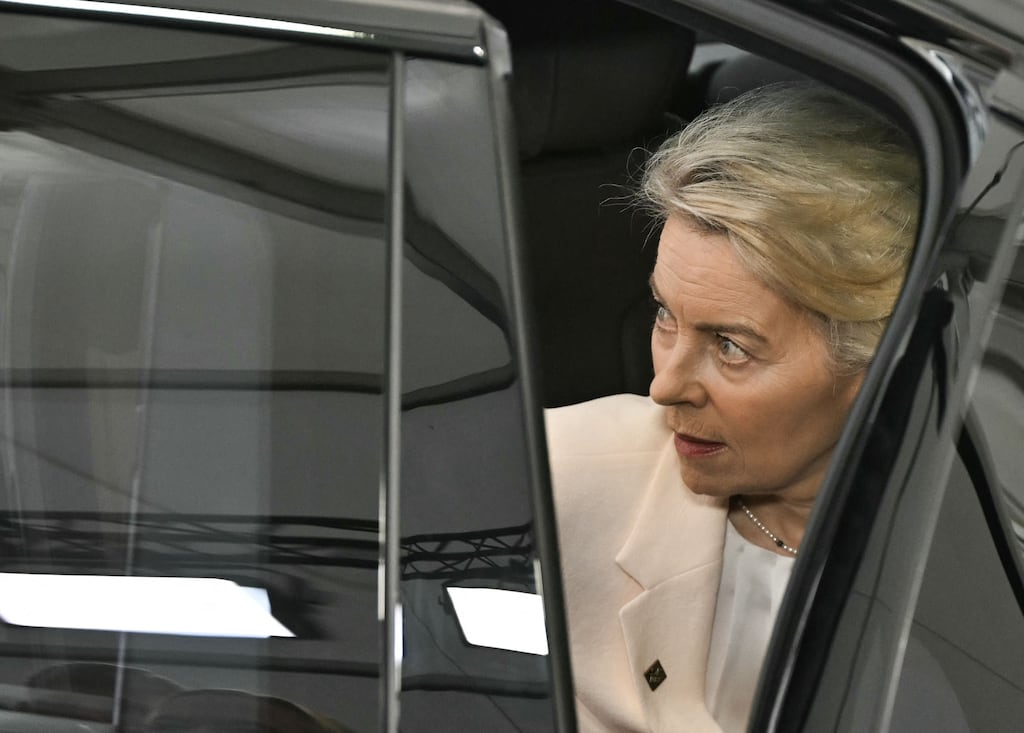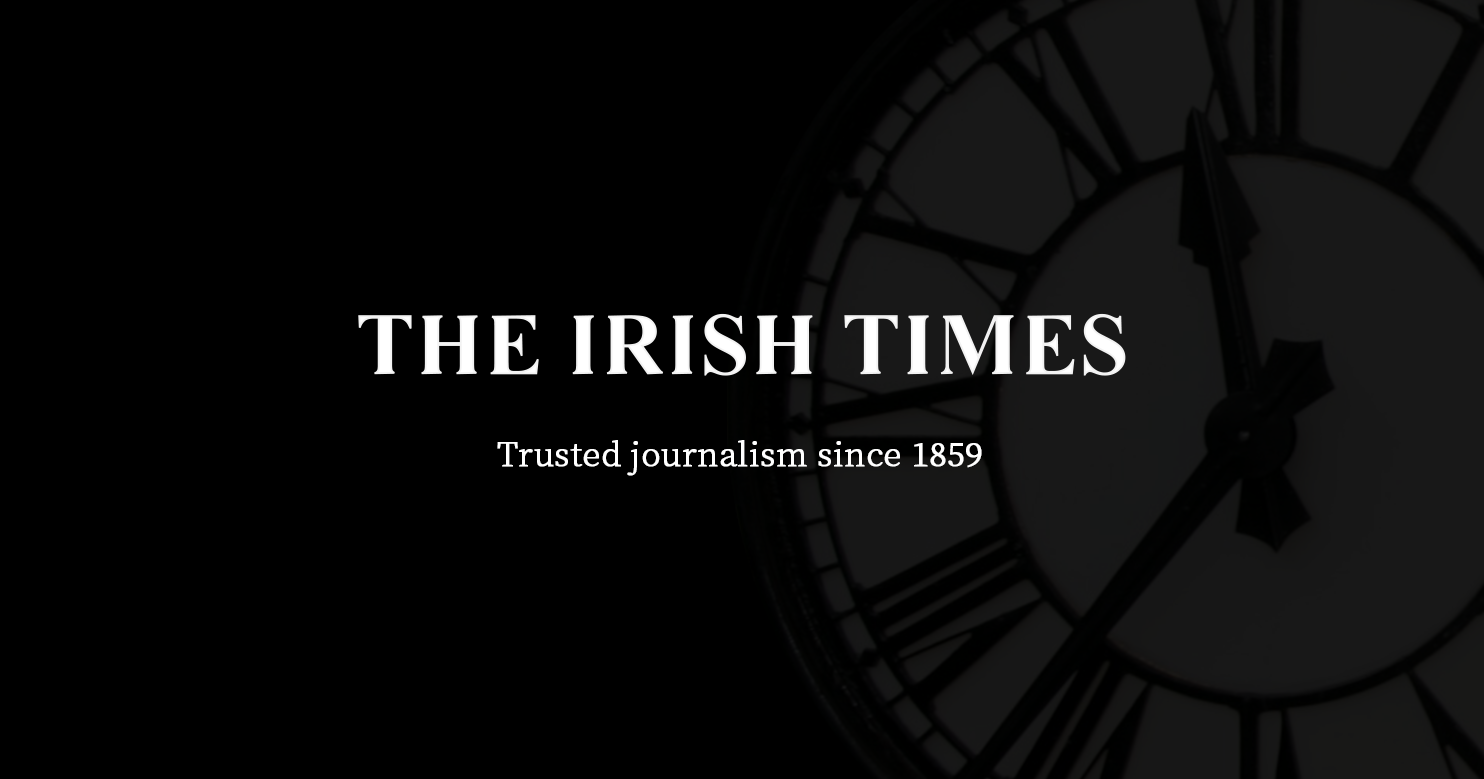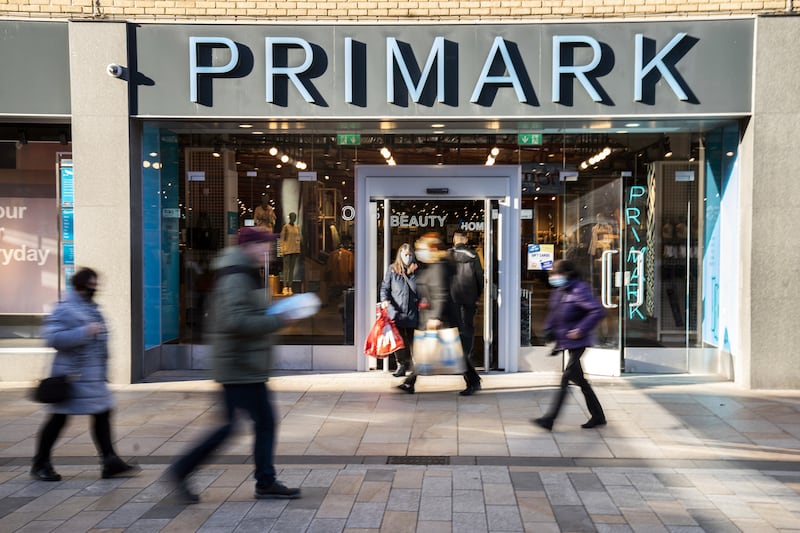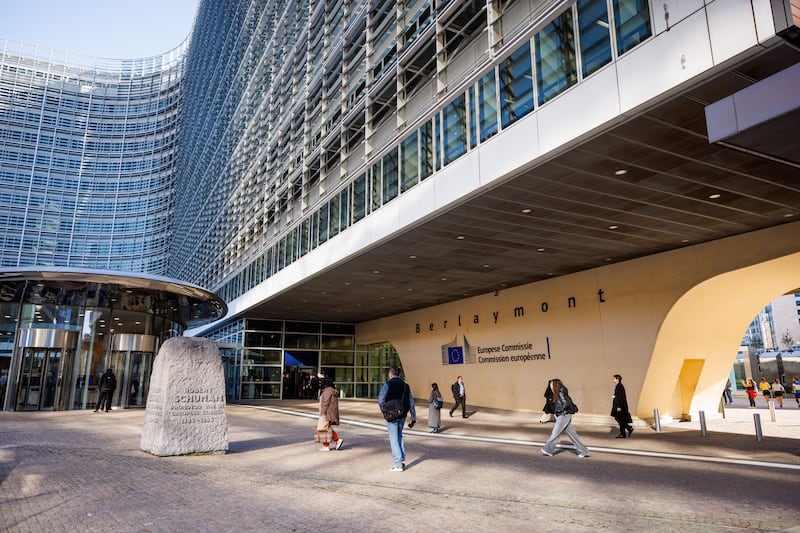You would not expect to bump into an on-duty garda walking around Brussels but there is a chance that you might these days.
A small number of gardaí have joined the 250 Irish diplomats and officials assigned to Ireland’s “permanent representation” to the EU in the Belgian capital in preparation for Ireland taking over the rotating presidency of the union next year.
The Government will in July assume the presidency of the council of the EU, for the second half of next year.
The influential role will see Cabinet ministers chair meetings in Brussels and Ireland to broker compromises between ministers from the other 26 states.
READ MORE
As part of the presidency, the State will host an important two-day summit, gathering the 27 EU leaders, who will then be joined by a wider group of 20 other European heads of state and government, including UK prime minister Keir Starmer and Ukrainian president Volodymyr Zelenskiy.
For months Irish security services have been planning to ensure the presidency passes off safely.
The summit will be a huge logistical and security undertaking to transport, protect and accommodate almost 50 foreign delegations at the same time.
About 5,000 people, including diplomats, government officials and journalists are expected to travel for the summit.
There are only a small number of venues in the State where officials feel such a summit can successfully be pulled off and they will most likely be in Dublin, necessitating significant traffic disruptions, as parts of the capital are shut down to accommodate travelling motorcades carrying European leaders to and from the venue.
The changing nature of recent threats in Europe means additional planning.

Rogue drones temporarily shut down Copenhagen airport the week before Denmark hosted the same summit of European leaders in its capital last month.
The finger was pointed at Russia, with the drone incursions suspected of being part of Moscow’s covert attempts to embarrass and undermine European governments.
The experience led to a rethink of Irish preparations.
“We see what’s happened in Denmark this year. God only knows what will be tried on us, but something will be tried,” one senior Government source said.
Co-ordinated instances of drones shutting down civilian and military airports in Belgium this week highlight an area where Ireland may be particularly vulnerable. In response, officials are stepping up planning for counter-drone measures.
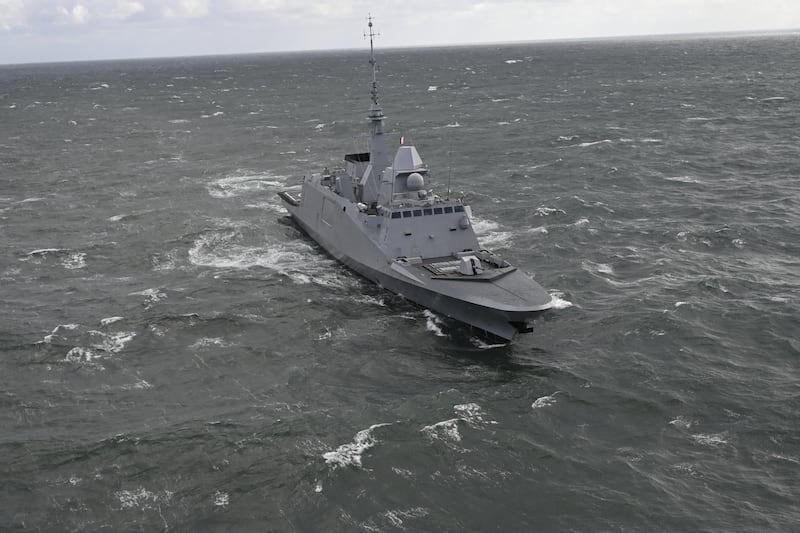
One of the most significant measures is a potential request to French military authorities to send a warship to Dublin during high-profile meetings to provide an air defence capability over the capital.
The move, which is under discussion among Irish officials, would involve a specialist air defence frigate deploying in Dublin Bay at certain times. France operates several of these frigates armed with guide missile systems capable of shooting down airborne threats up to 150km away.
One such vessel, the Bretagne, is to visit Dublin later this month for a courtesy visit. Such visits are routine. However, deploying a Nato-warship in a high-profile, operational role in Irish waters may cause controversy and highlight how deficient Irish defences are in this area.
Dublin Airport already has antidrone technology capable of detecting and disabling illegal drones. This equipment was obtained from the company Dedrone after drone sightings shut down flight operations at the airport in 2023.
Discussions are ongoing with security officials about the potential need to supplement this technology during preparations for the EU presidency.
The Government is also fast-tracking the acquisition of new anti-drone defences for Baldonnel military airport in west Dublin to protect the airspace during the arrivals of visiting heads of state and ministers.
This equipment will complement the existing but limited air defence capabilities of the Defence Forces. The Artillery Corps operates several Swedish RBS-70 short-range missile systems. These are designed to operate with the Saab Giraffe radar system.
However, a number of the Defence Forces’ Giraffes have been donated to Ukraine while the remainder are seen as largely obsolete for modern air defence purposes.
Additionally, troops have little real-world training in operating the missile systems. Ireland has no range capable of safely testing the missiles, meaning training must take place in Sweden or on a simulator.
The EU presidency will be one of the first big tests for Defence Forces chief of staff Lieut Gen Rossa Mulcahy, who took up the role last June.
“That’s going to draw on our resources across all three services,” he said during a recent interview with The Irish Times, referring to the Army, Naval Service and Air Corps.
“We’re planning for it. It’s a threat we have to mitigate and we have a plan in place.”
The challenges for An Garda Síochána, which is taking the lead role in security for the presidency, are likely to be even greater.
“This is going to be one the biggest policing events that we have ever managed,” said Garda Commissioner Justin Kelly at a recent meeting of the Policing and Security Safety Authority.
“I’ve said this before, it’s going to be a real challenge for us.”
A number of Garda delegations have travelled to Denmark in recent months to observe security measures taken by the Danish police.
In a June 27th letter, the then Garda commissioner Drew Harris sought permission from the Government to post several gardaí to Brussels as “liaison officers”.
It will be a very expensive policing operation
— Garda Commissioner Justin Kelly
In the letter, released under the Freedom of Information Act, Harris said gardaí were being posted to Brussels “in support of policing and security preparations for Ireland’s hosting of the EU presidency”.
One of the gardaí has an intelligence background with some Irish diplomats nicknaming their new colleague “Séamus Bond”.
Back home, a large amount of specialised equipment is being acquired. For example, gardaí are liaising with their Dutch counterparts about acquiring short-range antidrone weapons during the presidency.
Dutch authorities operate several such systems capable of taking down drones by blocking their radio signals. Other versions capture the drones using nets.
It is even expected that the use of short-range drone interceptors by gardaí will likely require fresh legislation, sources say.
The Garda Air Support Unit will also have the benefit of a new surveillance aircraft, recently purchased from Canada.
On the ground, the Emergency Response Unit will be able to avail of a newly acquired “armoured tactical truck (ATT)”, a 10-tonne bulletproof vehicle designed to respond to terrorist attacks.
The Garda response is being handled by a dedicated team led by a chief superintendent and under the direction of Deputy Commissioner Shawna Coxon.
The biggest challenge may be manpower. Policing operations during the presidency will involve vast amounts of overtime for gardaí.
“It will be a very expensive policing operation,” the commissioner said.
Last April the Garda Representative Association, which represents 11,000 rank-and-file gardaí, said it would not co-operate in planning for the presidency, in protest over the force’s management policies.
The GRA said it was withdrawing co-operation until agreement was reached on Garda travel and subsistence rates.
The last time the Republic held the presidency, which rotates between EU states every six months, was in 2013.
Separate to the summit, up to 22 minister-level EU meetings will be held in the Republic, with Dublin Castle expected to host several of them. At least five will be outside Dublin.
A meeting of the union’s 27 foreign ministers, tipped to be in the Wicklow constituency of Tánaiste and Minister for Foreign Affairs Simon Harris, will require enhanced security.
Previous estimates by sources in the Department of Foreign Affairs said hosting the presidency could cost the State €150 million-€180 million.
There is a growing sense the full bill could be much higher, particularly when increasing security costs are taken into account, several sources say. The Garda overtime budget alone will be very significant.
“They are challenging, there’s no question,” one Government source said of the security costs.
Senior figures involved in the EU presidency planning said part of the problem was the difficulty in accurately budgeting for the vast, and rising, costs of providing adequate security at high-level meetings and summits.
A decision was taken to settle the expected cost of the EU presidency separately to the Budget 2026 negotiations in October. It is understood the Department of Public Expenditure felt this would help keep a handle on costs.
The budget for the EU presidency will be decided as part of the “revised estimates” process, which will be worked out before the end of the year, a Department of Foreign Affairs spokeswoman said.
